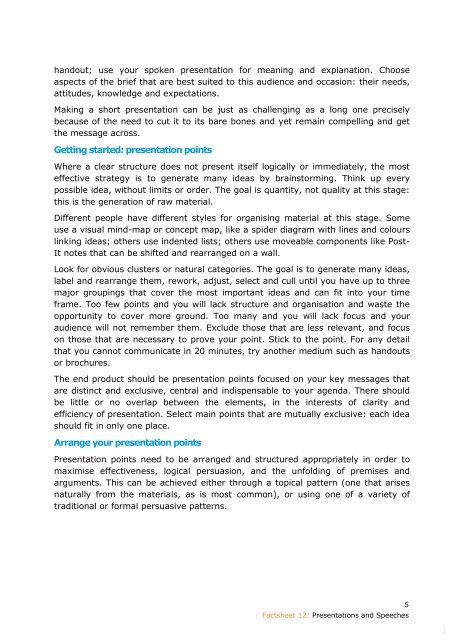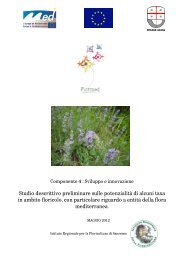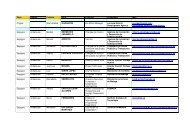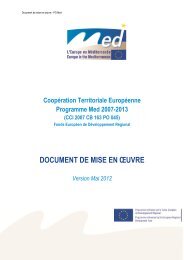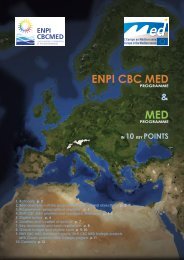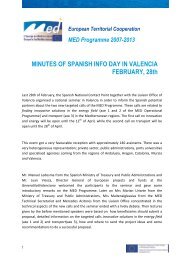MED Communication Handbook - Programme Med
MED Communication Handbook - Programme Med
MED Communication Handbook - Programme Med
Create successful ePaper yourself
Turn your PDF publications into a flip-book with our unique Google optimized e-Paper software.
handout; use your spoken presentation for meaning and explanation. Choose<br />
aspects of the brief that are best suited to this audience and occasion: their needs,<br />
attitudes, knowledge and expectations.<br />
Making a short presentation can be just as challenging as a long one precisely<br />
because of the need to cut it to its bare bones and yet remain compelling and get<br />
the message across.<br />
Getting started: presentation points<br />
Where a clear structure does not present itself logically or immediately, the most<br />
effective strategy is to generate many ideas by brainstorming. Think up every<br />
possible idea, without limits or order. The goal is quantity, not quality at this stage:<br />
this is the generation of raw material.<br />
Different people have different styles for organising material at this stage. Some<br />
use a visual mind-map or concept map, like a spider diagram with lines and colours<br />
linking ideas; others use indented lists; others use moveable components like Post-<br />
It notes that can be shifted and rearranged on a wall.<br />
Look for obvious clusters or natural categories. The goal is to generate many ideas,<br />
label and rearrange them, rework, adjust, select and cull until you have up to three<br />
major groupings that cover the most important ideas and can fit into your time<br />
frame. Too few points and you will lack structure and organisation and waste the<br />
opportunity to cover more ground. Too many and you will lack focus and your<br />
audience will not remember them. Exclude those that are less relevant, and focus<br />
on those that are necessary to prove your point. Stick to the point. For any detail<br />
that you cannot communicate in 20 minutes, try another medium such as handouts<br />
or brochures.<br />
The end product should be presentation points focused on your key messages that<br />
are distinct and exclusive, central and indispensable to your agenda. There should<br />
be little or no overlap between the elements, in the interests of clarity and<br />
efficiency of presentation. Select main points that are mutually exclusive: each idea<br />
should fit in only one place.<br />
Arrange your presentation points<br />
Presentation points need to be arranged and structured appropriately in order to<br />
maximise effectiveness, logical persuasion, and the unfolding of premises and<br />
arguments. This can be achieved either through a topical pattern (one that arises<br />
naturally from the materials, as is most common), or using one of a variety of<br />
traditional or formal persuasive patterns.<br />
� Factsheet 12: Presentations and Speeches<br />
5<br />
�


